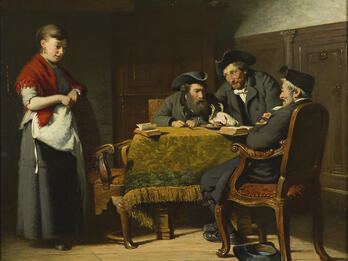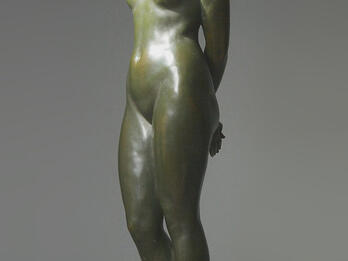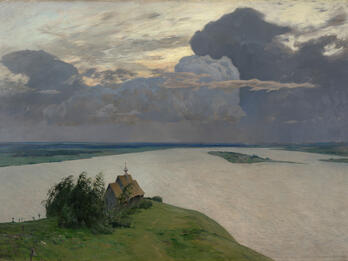A Son of the Ancient Race
Jozef Israëls
ca. 1889
Image

Engage with this Source
Creator Bio
Jozef Israëls
1824–1911
The son of an observant Jewish family in Groningen, Holland, Jozef Israëls became one of the foremost Dutch artists of the nineteenth century. After initially painting portraits and historical subjects, in the 1850s Israëls turned to painting genre scenes in a powerful realist style, particularly depictions of the hard lives of fishermen and their families. In the 1870s, Israëls became a leader of the Hague school and achieved international renown. Late in his career, Israëls portrayed Jewish subjects, notably The Son of an Ancient People (1889) and The Jewish Wedding (1903), as well as biblical subjects. His son became a painter as well.
You may also like

Portrait of Menachem Mendel Schneerson (Tsemakh Tsedek)
Menachem Mendel Schneersohn (1789–1866), the third rebbe of Chabad Hasidism, was a preeminent religious figure of nineteenth-century East European Jewry. The portrait is an early example of Boris…

The Difficult Question
Early in his career, Jacob Meyer de Haan (also known as Isaac Meyer de Haan) was known for his Jewish genre paintings. In this one, painted in 1880 while de Haan still resided in the Netherlands, a…

The Captive
This bronze statue, The Captive, also known as The Slave, is one of the allegorical sculptures for which Maria Dillon is best known. It depicts a woman, whose hands are bound behind her back, bowing…

Above Eternal Peace
Above Eternal Peace is Isaak Levitan’s most famous painting, a revered example of the “mood landscapes” popular in Russia at the end of the nineteenth century. The artist painted the view from a cliff…

The Moon and Sleep
Simeon Solomon’s The Moon and Sleep was inspired by the Greek story of Endymion, a beautiful youth beloved of Selene, the goddess of the moon. In some versions of the myth, Zeus grants Endymion…

Sukkoth
Leopold Pilichowski began painting pictures with Jewish themes shortly after moving to the Polish industrial city of Łódź around 1894. He depicted the everyday life of impoverished Jews and Jewish…

